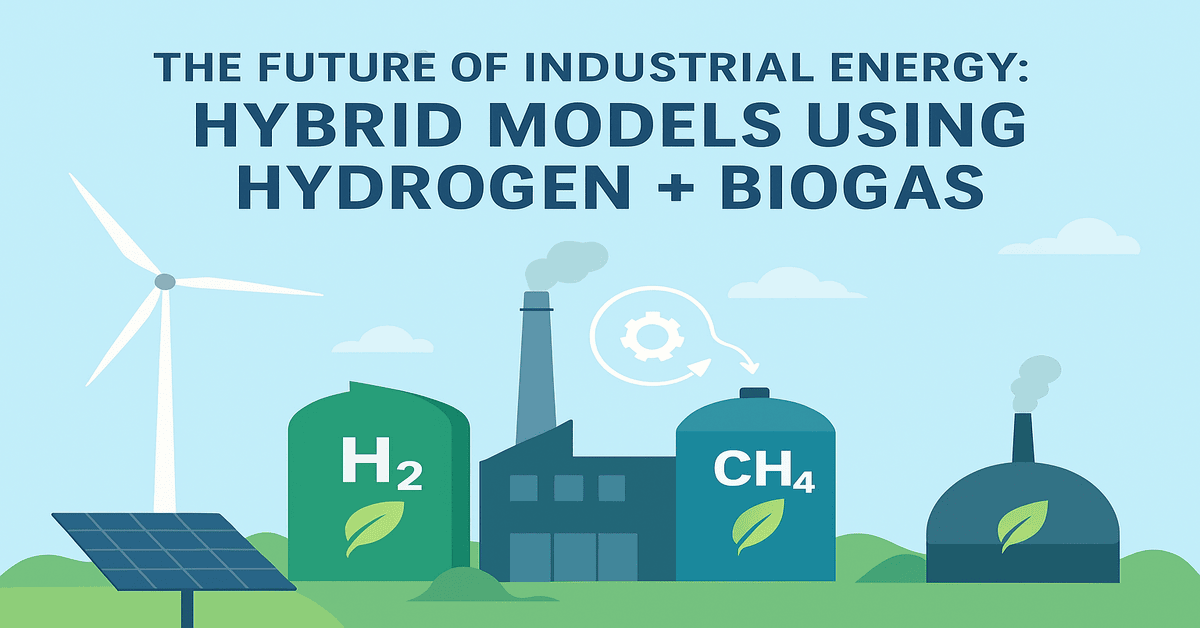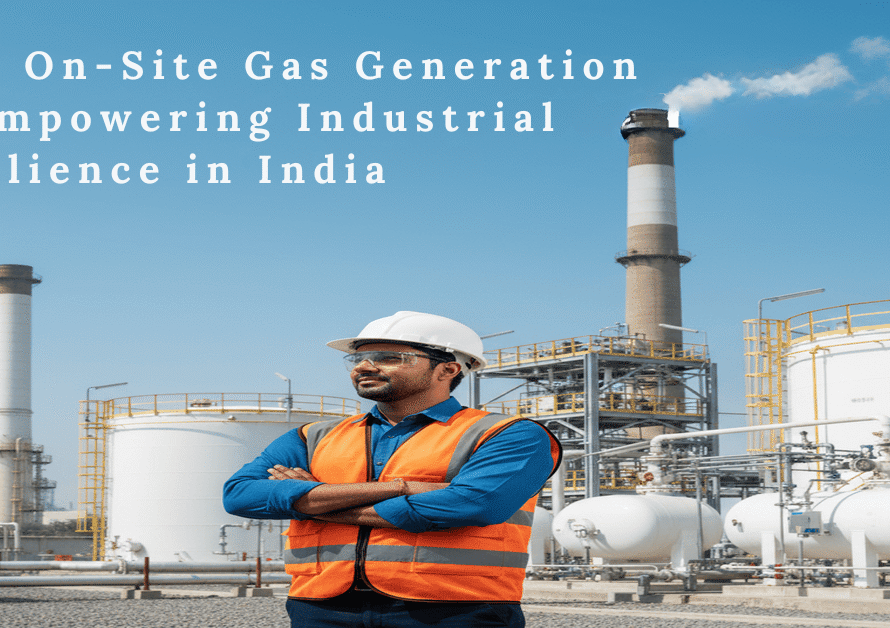
Powering Tomorrow: How Hydrogen–Biogas Hybrids Are Redefining Industrial Sustainability
As industries transition toward net-zero targets, energy diversification has emerged as a key enabler of sustainable growth. While hydrogen is hailed as the clean fuel of the future, and biogas as a renewable resource with circular economy benefits, their true potential lies in hybrid energy models that combine both. By leveraging the complementary strengths of hydrogen and biogas, industries can achieve decarbonization, energy security, and cost optimization—driving a future that is both climate-friendly and economically viable.
Why Hybrid Energy Models?
Hybrid models integrate green hydrogen and biogas as co-fuels, offering a balanced approach to energy transition.
Key Advantages:
- Decarbonization at Scale – Hydrogen eliminates carbon emissions at the point of use, while biogas reduces methane leakage and utilizes organic waste.
- Grid Stability & Flexibility – Hybrid fuels can be blended to support varying industrial energy demands and grid balancing.
- Cost Optimization – Biogas offers immediate availability at lower costs, while hydrogen adoption can scale gradually.
- Energy Security – Diversifying fuel sources reduces reliance on fossil fuels and imported LNG.
Hydrogen + Biogas: A Synergistic Approach
- Hydrogen as a Clean Combustion Enhancer
Blending hydrogen with biogas improves flame stability, reduces CO₂, and enables near-zero SO₂ and NOx emissions. - Biogas as a Transitionary Fuel
Provides carbon-neutral energy while hydrogen infrastructure develops. - Co-Firing in Industrial Boilers
Industries like cement, steel, and chemicals can use hybrid hydrogen–biogas blends to lower emissions without major retrofitting. - Support for Circular Economy
Biogas leverages organic and municipal waste, while hydrogen enables green industrial production.
Industrial Sectors Benefiting from Hybrid Models
- Cement & Steel
Hybrid blends reduce CO₂ and NOx in high-temperature furnaces.
Potential alignment with carbon credit mechanisms. - Power Generation
Hydrogen–biogas co-firing in gas turbines and boilers reduces fossil dependency.
Supports renewable integration in microgrids and distributed generation. - Chemical & Fertilizer Industry
Green hydrogen for ammonia + biogas for heat and power → holistic decarbonization. - Automotive & Transport
Pilot projects using biogas-derived RNG (renewable natural gas) mixed with hydrogen for fueling heavy-duty fleets.
Challenges in Hydrogen–Biogas Hybrid Adoption
- Hydrogen Infrastructure Gaps – Lack of pipelines, storage, and refueling facilities.
- Biogas Purity Issues – Upgrading biogas to biomethane requires investment.
- Cost Sensitivity – Hydrogen is still more expensive compared to natural gas or coal.
- Policy & Standardization – Limited regulatory clarity on blending ratios and safety frameworks.
Emerging Trends and Innovations
- Green Hydrogen + Biohydrogen Integration – Synergy between electrolysis-based hydrogen and microbial hydrogen from biogas plants.
- Carbon Capture Integration – Hybrid systems paired with CCUS (Carbon Capture, Utilization, and Storage) for negative emissions.
- Smart Hybrid Energy Parks – Industrial zones developing shared infrastructure for hydrogen and biogas production.
- Digital Twins & AI Optimization – Predictive models optimizing blend ratios for cost and emissions.
India’s Push for Hybrid Clean Energy
India’s twin focus on hydrogen and bio-CNG makes hybrid models highly relevant.
- National Green Hydrogen Mission (NGHM) – Targeting 5 MMT of green hydrogen production by 2030.
- SATAT Initiative – Scaling compressed biogas (CBG) production from 5,000+ plants.
- Policy Convergence – Blending mandates, subsidies, and tax incentives for hydrogen + biogas adoption in transport and industries.
- Industrial Collaborations – Partnerships between IOCL, NTPC, and global tech firms on hybrid energy projects.
Conclusion: The Future is Hybrid
Hydrogen and biogas, when combined, offer a scalable, sustainable, and economically feasible pathway to industrial decarbonization. Hybrid models are not just a transitional solution—they represent the next phase of industrial energy evolution, where circular economy principles align with clean hydrogen innovation. By integrating these two renewable fuels, industries can accelerate their journey toward net-zero emissions while securing energy independence.




